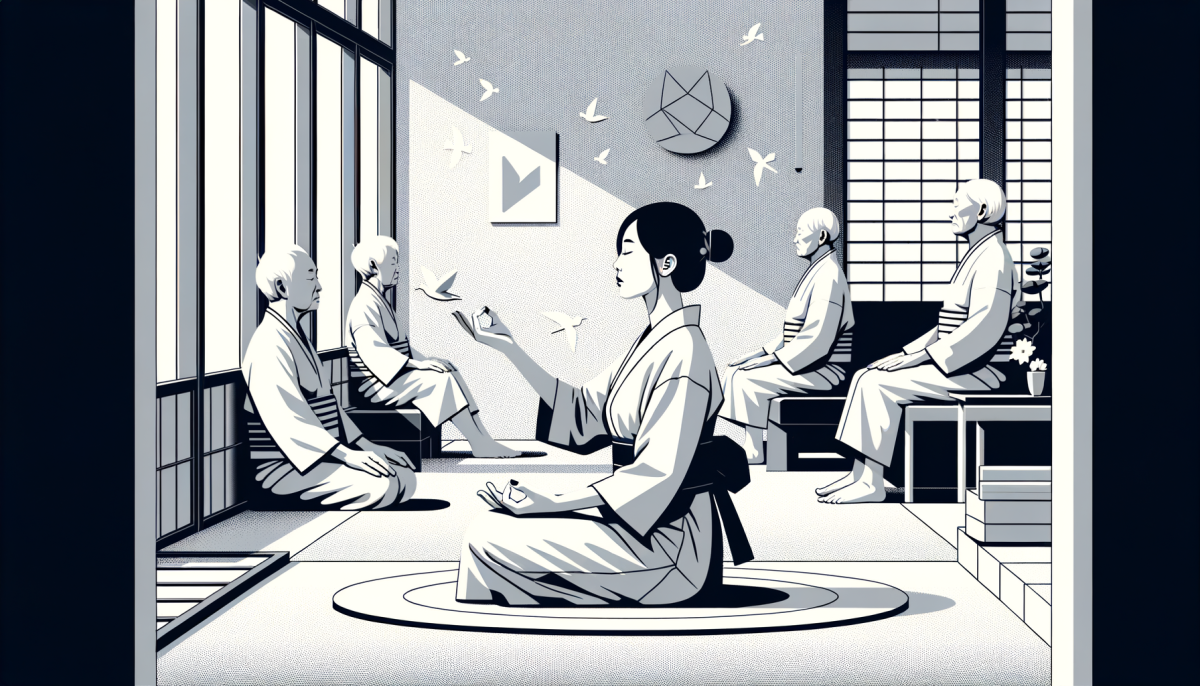Introduction
In the ceaseless whirl of life, it’s easy to lose sight of the present moment. We often find ourselves dwelling on the past or fretting about the future, neglecting the here and now. This is where mindfulness comes into play. It’s a practice that encourages us to focus on the present, to be fully engaged with what we’re doing, and to not be overly reactive or overwhelmed by what’s happening around us.
Understanding Mindfulness

Mindfulness, at its core, is a state of active, open attention to the present. It’s about observing your thoughts and feelings without judgment, rather than letting life pass you by. It’s about being present in the moment, rather than dwelling on the past or anticipating the future. It’s about accepting things as they are, rather than wishing they were different.
Mindfulness is not a destination, but a journey. It’s not about achieving a state of eternal happiness or tranquility, but about learning to navigate life’s ups and downs with grace and resilience. It’s about cultivating a sense of inner peace and balance that can help us navigate life’s challenges with more ease and less stress.
Mindfulness is not a quick fix or a magic bullet. It’s a practice that requires patience, commitment, and discipline. It’s not about eliminating all negative thoughts and emotions, but about learning to relate to them in a healthier way. It’s about learning to be present with whatever arises, without getting caught up in the drama of our own minds.
Daily Mindfulness Techniques
There are many ways to cultivate mindfulness in daily life. One of the most common techniques is mindfulness meditation, which involves sitting quietly and focusing on your breath, an image, or a word or phrase. The goal is not to empty your mind of thoughts, but to observe them without judgment and let them go.
Another technique is mindful eating, which involves paying full attention to the experience of eating and drinking, from the taste and texture of the food to the feelings of hunger and fullness. This can help you enjoy your food more, eat less, and feel more satisfied.
Mindful walking is another technique that can be practiced anywhere, anytime. It involves paying attention to the sensation of walking, from the feeling of your feet touching the ground to the rhythm of your breath. This can help you feel more grounded, calm, and connected to your body.
Mindfulness and Stress Management
Mindfulness can be a powerful tool for managing stress. By bringing our attention back to the present moment, we can interrupt the cycle of negative thoughts and emotions that often fuel stress. We can learn to respond to stress in a more adaptive way, rather than reacting impulsively or automatically.
Mindfulness can also help us cultivate a more compassionate and accepting attitude towards ourselves and our experiences. Instead of beating ourselves up for our mistakes or shortcomings, we can learn to treat ourselves with kindness and understanding. This can help us reduce self-criticism and self-judgment, which are often major sources of stress.
Moreover, mindfulness can help us develop a greater sense of inner peace and balance, which can buffer us against the negative effects of stress. By learning to stay present and grounded in the midst of life’s challenges, we can navigate them with more ease and resilience.
Conclusion
In conclusion, mindfulness is a powerful practice that can enhance our well-being and quality of life. It’s not a quick fix or a magic bullet, but a journey of self-discovery and growth. By cultivating mindfulness in our daily lives, we can learn to live more fully in the present, manage stress more effectively, and cultivate a greater sense of inner peace and balance. So why not give it a try? You might be surprised by what you discover.





